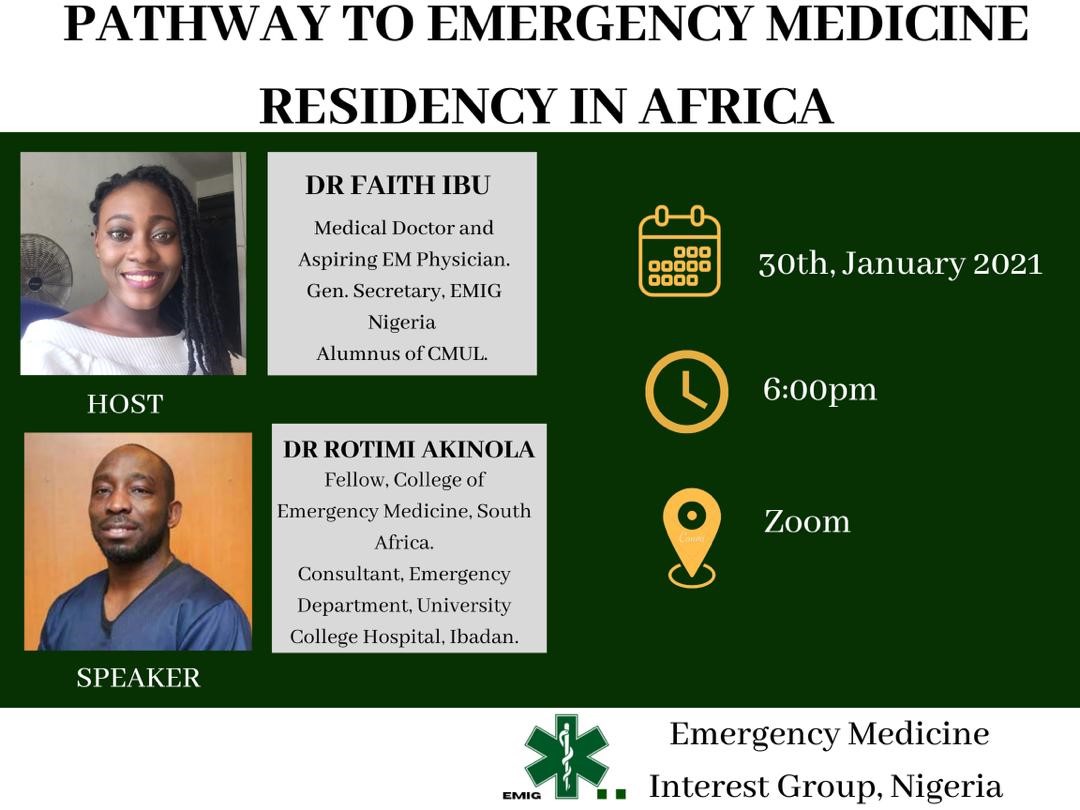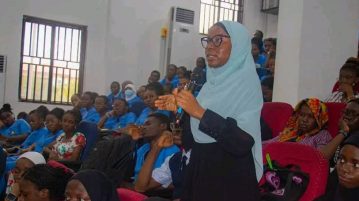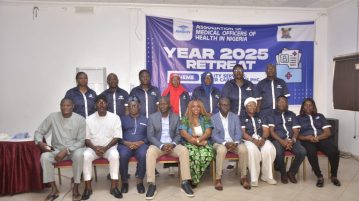Since the emergency medicine specialty development about 50 years ago, formal graduate training programs have sprung up in developed and developing countries. The first emergency medicine residency program in Africa started at the University of Cape Town in 2004. As of 2017, there were 15 emergency medicine residency programs across 12 countries in Africa and one in West Africa.
Emergency Medicine Interest Group (EMIG), Nigeria, is an educational organization founded and run by medical students in Nigeria to bridge the knowledge gap between the Nigerian medical student’s interest in emergency medicine and the practice of emergency medicine as a specialist. Medical students and recent graduates passionate about the specialty are equipped with the information, resources, and support needed to secure emergency medicine training positions worldwide. On the 30th of January 2021, EMIG hosted a live webinar titled ‘Pathway to Emergency Medicine Residency in Africa’ on zoom featuring Dr. Rotimi Akinola (Emergency Medicine Specialist and Sports Physician), with Dr. Ibu Faith (General Secretary, EMIG) moderating the session.
Dr. Rotimi Akinola is a Fellow of the College of Emergency Medicine, South Africa, with a postgraduate master’s degree in Emergency Medicine from the University of The Witwatersrand, Johannesburg. He is passionately involved in emergency care training in Nigeria and South Africa with special interests in prehospital, aviation medicine, mass gatherings, and sports medicine. He has experience working in Nigeria, South Africa, Canada, and the United Kingdom.
He began the session with a definition of emergency medicine (EM) and an EM specialist. Emergency medicine is the area of medicine concerned with the care of illnesses and injuries that require immediate medical attention. He stated that EM is one of the best specialties to work in; it is glamorous, dynamic, and exciting, with endless opportunities to make a difference. He went on to discuss the building blocks of the practice of EM using the picture below.
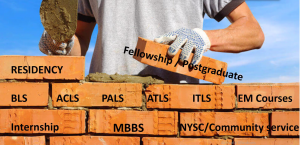
Generally, there are two main ways to learn EM: Self-directed apprentice-based learning versus a structured program like a residency program.
Self-directed learning usually occurs on the emergency room floor, where one learns by experience and practice. Self-directed learning is the only form of EM learning currently available in Nigeria. He encouraged aspiring EM physicians to spend as much time as possible in the emergency department, doing rotations, electives and even volunteering. He also advised physicians to take EM specific courses such as BLS (Basic Life Support), ATLS (Advanced Trauma Life Support), and PALS (Pediatric Advanced Life Support) with American Heart Association (AHA) accredited organizations.
Structured training programs for EM include residency programs, fellowships, and postgraduate degrees. EM residency programs are currently being developed all over Africa, as seen in the chart below.
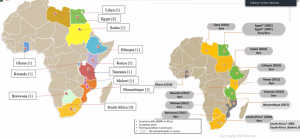
He shared his journey and experience through a structured residency program in South Africa, a country leading the emergency care trail in Africa. He described EM training in South Africa as diverse, rich, and applicable to the African context featuring rotations in many sub-specialties and many major hospitals, networking, and interaction with students, residents, and other specialists worldwide. He talked about the culture shock due to stark differences in emergency practices in South Africa and Nigeria. He highlighted that much work needs to be done in emergency care development in Nigeria and that it is possible to catch up if we start taking the right steps.
To get started, contact institutions for specific admission requirements. For example, in South Africa, applicants are required to pass an entrance examination and interviews. Most EM residency programs in Africa take about 4-5 years and accept International Medical Graduates (IMGs) on a supernumerary basis. This implies that residents have to be self-sponsored or sponsored by a hospital here in Nigeria. While this might pose a challenge to many, he counseled us to have a support system to encourage us and keep us going. There might also be options for bursaries for master’s and doctoral degree programs. He encouraged EM aspirants to join, get involved in emergency medicine associations in Africa, and network with people with similar interests.
In Nigeria, emergency medicine sees a brighter future as the National Postgraduate College has recently approved a training curriculum with hopes of starting later this year. For those looking to train and practice in Nigeria, we hope that this becomes a valid option to consider. Likewise, its important to be on the lookout for more information regarding this. He also went on to share the different stages of training and several experiences in various fields of EM.
For doctors interested in doing their residency program in the USA, EMIG will be hosting Dr. Nina Lum, Creator of IMG roadmap and Host of the IMG podcast. An IMG herself, she has years of experience in assisting other IMGs, and she will be breaking down the Match process with practical and tested tips. The Match process is a uniform system by which residency candidates match into residency programs accredited by the Accreditation Council for Graduate Medical Education (ACGME). You can register for this session by clicking this link.

Editor’s note:
Article was collated by Dr. Faith Ibu (general secretary of Emergency Medicine Interest Group (EMIG), Nigeria). To get the session’s recording or for more information on EMIG, an email can be sent to emig.nigeria@gmail.com.

